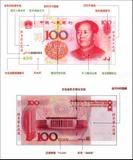(9 am. – promoted by ek hornbeck)
 Here at Docudharma yesterday’s diary on The Magic of Default Swaps: You Too can be an Insurance Company, cassiodorus says:
Here at Docudharma yesterday’s diary on The Magic of Default Swaps: You Too can be an Insurance Company, cassiodorus says:
Dollar hegemony, however, can only prevent a general contagion of dollars up to a point. What that point is, however, is a mystery. … Thus hyperinflation and currency crash.
As I see it, there are two paths ahead.
(1) A crash program of investment in sustainable energy production and energy efficiency in transport, housing and farming, leveraging the exporters-exchange-rate the US$ will be seeing into a central position in the growth industries of the 21st century … or …
(2) We try to continue on the same unsustainable course, and have a hyperinflation.
Background, more detail and analysis beyond the fold.
First, more of the text of what cassiodorus said (and, yes, the kossack cassiodorus):
There is, of course, a catch to all this. If there are more dollars out there, and the whole of the dollar economy chases the same supply of goods and services, then each dollar ends up being worth less. But wait! There’s a solution to that, too. It’s called “dollar hegemony,” and it compels major holders of dollars (eg foreign banks) to prop up the dollar’s value in order to preserve their own dollar holdings.
Dollar hegemony, however, can only prevent a general contagion of dollars up to a point. What that point is, however, is a mystery. It might happen in the coming months, as an increasing spiral of bailouts fails to resurrect the willingness to loan that has died because of, well, the mortgage crisis, but beyond that because of the general failure of the economy to grow sufficiently to please the investor class. Thus hyperinflation and currency crash.
Hegemony is not Utter Dominance
As with a lot of $5 words that people throw around with glee, there is sometimes some confusion about the term Hegemony. Hegemony does not mean Absolute Supremacy. It means an advantage in power such that beating you head to head takes most of the other players lining up against you. If the Hegemon plays their cards well, and can pick their most preferred outcome from those that can attract sufficient support from other players, they can be on the winning side of most questions. But if they play it too close to the line, they can indeed lose to an opposing coalition.
And so its important to bear in mind that dollar hegemony is not forced on the other economies in the world system as a group. Rather, after a period of dollar dominance after WWII, central banks around the world settled on the dollar as an international currency to use to settle their external accounts. And if an individual country breaks away from that, they pay a price in terms of constantly having to exchange their international reserve currency with dollars.
But North America is roughly a quarter of the world’s economy, the EU is roughly a quarter of the world’s economy, and roughly half the world’s economy is everyone else. And if enough of that half switches to the Euro as the safer bet, then the US$ simply stops being the international reserve currency … and there is very little the US can do to stop it.
The US Dollar has been propped up for years.
 Now, if you are a country that is more focused on gaining a trade surplus than on the immediate standard of living in your country, its possible to depress the exchange rate of your currency, to make your wage rates, other resources, and products cheaper overseas, and imports more expensive. This is a “neo-mercentalist” policy that none of the World Trade Organization’s rules on cutting tariffs will touch.
Now, if you are a country that is more focused on gaining a trade surplus than on the immediate standard of living in your country, its possible to depress the exchange rate of your currency, to make your wage rates, other resources, and products cheaper overseas, and imports more expensive. This is a “neo-mercentalist” policy that none of the World Trade Organization’s rules on cutting tariffs will touch.
And China, a number of Southeast Asian countries, some Latin American countries, and others have been deliberately pursuing this policy … which involves creating their own currency, and using it to buy up an international exchange currency, increasing supply for their currency and pushing down its price in overseas currency markets.
The side-effect, of course, is to prop up whatever international exchange currency they have been buying … which has been mostly the US$. But they can switch that policy to the Euro, if they want.
Indeed, the Chinese now have a system of buying a basket of international currencies. They don’t tell anyone the make-up of the basket, or the target exchange rate. Clearly its still mostly US$ … but they can edge out of US$ slowly, without creating the big shock on the market that would be caused by an open announcement.
On the US$ keeping its status, I’m not an optimist
Now, according to the official government statistics, the US Federal government has been devoting a majority of its purchases of goods and services to defense-related spending for quite some time now.
And when you buy armaments, you create income that mostly goes to buy consumer goods. You also create some demand for productive equipment and industrial supplies, but the income itself is mostly directed to consumption.
Which seems to have resulted increasingly in imports of consumer goods, leading to a trade deficit greater than average GDP growth rates. And that is financially unsustainable over the long haul.
The current account deficit blow-out has been happening during this entire administration … why doesn’t the corporate media raise its eyebrows over this problem? Well, most “business news” reporting is really financial market reporting, and what the financial markets are focused on is how last month went compared to the month before. The fact that both this month and the month before and the year before that and five years before that was unsustainable over the long term … is completely lost in the month to month bouncing around.
The Real Growth Path Ahead
 Now, if our nation’s days of economic hegemony are behind us, one reaction is to look, clear eyed, at how our nation can proceed to earn our way in the world, without relying on being propped up by low-income developing nations.
Now, if our nation’s days of economic hegemony are behind us, one reaction is to look, clear eyed, at how our nation can proceed to earn our way in the world, without relying on being propped up by low-income developing nations.
And there is one clear area of our import bill where we can make substantial headway fixing things over the decade and two decades ahead. That area defines the first path:
(1) A crash program of investment in sustainable energy production and energy efficiency in transport, housing and farming, leveraging the exporters-exchange-rate the US$ will be seeing into a central position in the growth industries of the 21st century.
If we do that, we have a serious prospect of emerging from the trouble economic times facing us in much stronger fundamental shape than any time since US Oil Production peaked in 1968.

The Death Spiral Alternative
Long before I studied Economics in a serious way, my first degree was in Latin American studies. And bringing that background into the study of Economics, I have followed what happens when countries have long-term unsustainable economic policies, and stick with them for political reasons.
That defines the second path:
 (2) We try to continue on the same unsustainable course, and have a hyperinflation like that experienced by the Weimer Republic under reparations payments that could not be sustained, Brazil in the 1970’s and 1980’s under foreign debt obligations in foreign currency that could not be sustained, the Confederacy once Cotton Production Bonds ceased being accepted as regular debt by British merchants.
(2) We try to continue on the same unsustainable course, and have a hyperinflation like that experienced by the Weimer Republic under reparations payments that could not be sustained, Brazil in the 1970’s and 1980’s under foreign debt obligations in foreign currency that could not be sustained, the Confederacy once Cotton Production Bonds ceased being accepted as regular debt by British merchants.
Knowing this, only the Insane would vote McCain
Clearly, the program set out by Obama/Biden is not far enough or fast enough down Path 1. On the other hand, it is a serious policy to take some small, fairly hesitant steps down Path 1.
And just as clearly, the hawkish bellicosity of John McCain and utterly clueless George W Bush the 2nd character of Sarah W Palin is firmly fixed on denial of the serious mess that the Republican denial of and diversion from economic reality have gotten us into. So a vote for McCheney / Sarah W Palin is a vote for hyperinflation and economic ruin.
Knowing that, only the insane would vote McCain.
However, also knowing that, voting Obama, and working to elect Obama, is not enough. We have to work to elect a Progressive Caucus majority in the House and close enough to 60 Democratic Senators that hammering the Republican class for 2010 on obstructionism can get us over the top by 2010.
Because by 2010, it should be clear how badly the country has been led astray by 12 years of Reaganism, followed after a two year interval by 12 years of Republican Congresses, followed by a White House dominated by nearly the worst imaginable combination of Do-Nothing on the most urgent domestic challenges and Do-Bad on the most urgent international challenges.
Somewhere, out there, is a Senate Candidate or House Progressive Candidate who needs your help. And after eight years of inaction and perversely malign action, there is precious little time to, first, set down Path 1 and, second, to shatter the hurdles standing in the way and crank up the speed to the pace required.

7 comments
Skip to comment form
Author
… in a diary written as an expansion of a couple of comments here at Docudharma.
Children playing with bricks of worthless Marks.
is that as much as a flood of dollars should supposedly depreciate their value, there really isn’t another currency that stands to gain in the process.
The British and Continental economies have their own real estate bubbles to deal with, which are causing bank nationalizations and record setting interest rate cuts – with predictable effects on both the Pound and the Euro.
The Yen has been getting a little bump in all of this, but Japan certainly isn’t looking to replace the dollar as fiat currency. China has locked the Renminbi rate to the Dollar and seems happy to keep it that way.
Where do all of these dollars get traded to? The Brazilian Real? The Russian Ruble?
So long as no other major economy is doing well economically, the Fed seems to think that it can print as much paper as it wants without the threat of a major currency sell off.
It may be right.